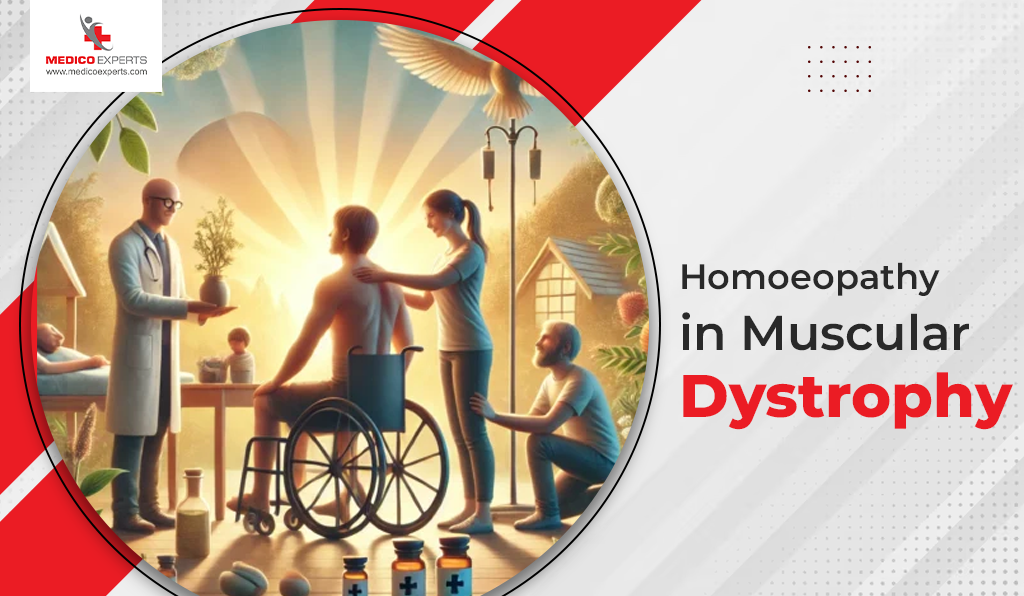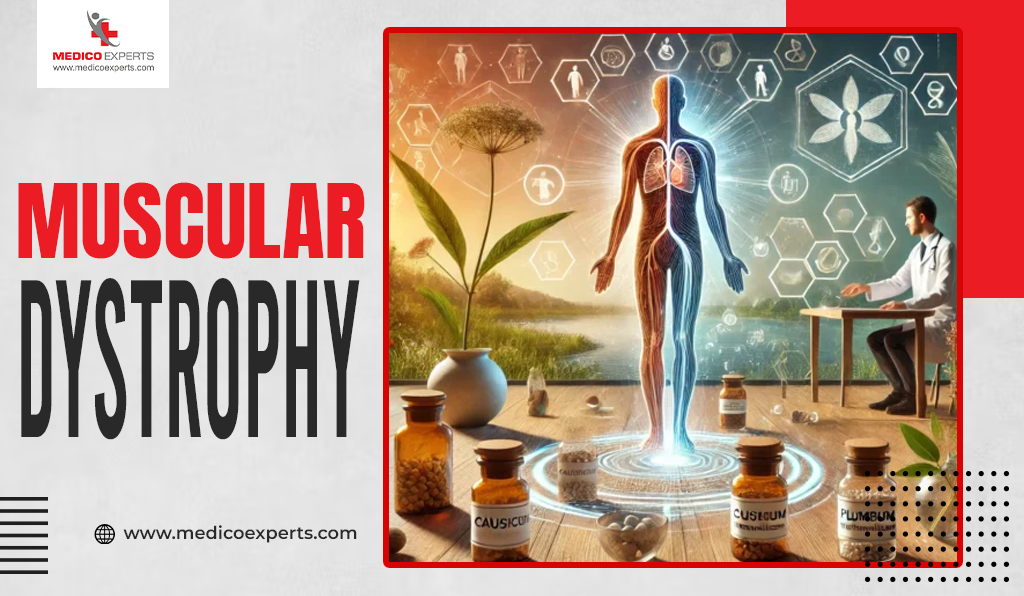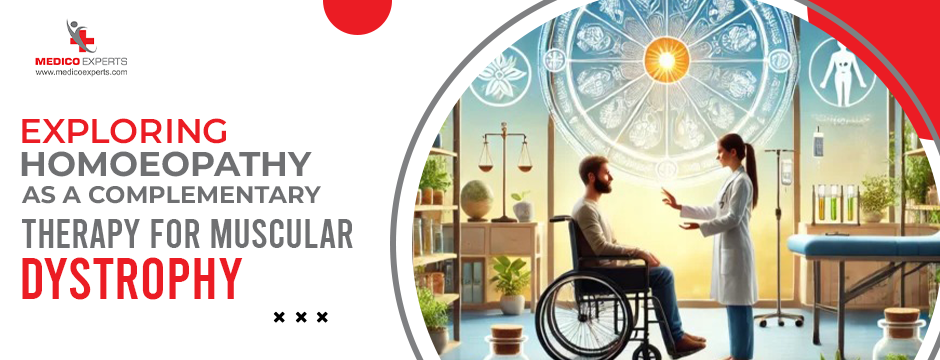Living with muscular dystrophy can be challenging, with its progressive muscle weakness and loss of mobility affecting daily life. While conventional treatments focus on managing symptoms, many families seek additional ways to improve overall well-being. This is where homeopathy for muscular dystrophy comes in. As a complementary therapy, it offers a holistic approach that supports both physical and emotional health. By stimulating the body’s natural healing mechanisms, homeopathy may help alleviate discomfort and enhance quality of life. Could this be the supportive care option you’ve been looking for?
Muscular Dystrophy—What Exactly Is It?
Muscular dystrophy isn’t just one condition—it’s actually a group of disorders, like Duchenne, Becker, and Limb-Girdle muscular dystrophy. Each type comes with its own set of challenges, but they all have one thing in common: progressive muscle weakening. This happens because of genetic mutations that interfere with the way muscles work. It’s like your muscles aren’t getting the support they need, making everyday tasks harder over time.
Symptoms of Muscular Dystrophy:
Some symptoms of muscular dystrophy are:
- Progressive weakness of muscles
- Trouble in walking or standing
- Stiffness and cramps in the muscles
- Respiratory problems
- Cardiac complications
- Traditional Treatment Methods
Traditional treatment methods for muscular dystrophy usually involve:
There are several traditional treatment methods for muscular dystrophy. We will discuss some of them:
Physical Therapy: Sustaining Muscle Flexibility and Strength
Physical therapy is often the cornerstone of muscular dystrophy management. It involves tailored exercises designed to maintain muscle flexibility, strength, and overall mobility. Stretching routines can prevent contractures—the permanent tightening of muscles and joints—while low-impact activities like swimming or cycling help preserve muscle function for as long as possible. Regular physical therapy sessions can also delay the progression of muscle stiffness and improve balance and coordination. Studies have shown that consistent physical therapy can significantly enhance the quality of life for individuals with muscular dystrophy.
Medications: Corticosteroids and Heart Drugs
Certain medications play a critical role in managing the symptoms of muscular dystrophy. Corticosteroids, like prednisone and deflazacort, are often prescribed to slow muscle degeneration and improve muscle strength. While these drugs can provide short-term benefits, they may also have side effects, including weight gain and weakened bones. Additionally, heart medications such as beta-blockers and ACE inhibitors are commonly used for individuals experiencing cardiac complications, which are frequent in conditions like Duchenne muscular dystrophy. Research indicates that early intervention with these medications can prolong mobility and enhance cardiac health.
Assistive Devices: Braces, Wheelchairs, and Mobility Aids
As muscle weakness progresses, assistive devices become essential for maintaining independence and mobility. Braces and orthotic devices provide support to weakened muscles, preventing joint deformities and reducing the risk of falls. For individuals with advanced muscular dystrophy, wheelchairs and mobility scooters offer freedom of movement, enhancing participation in daily activities. Innovations in mobility technology, including motorized wheelchairs with adaptive controls, continue to improve the quality of life for those living with muscular dystrophy. Many studies emphasize the positive impact of mobility aids on mental well-being and social engagement.
Surgical Interventions: Reshaping Spinal Deformities or Easing Muscle Tightness
In cases where muscular dystrophy leads to severe muscle contractures or spinal deformities like scoliosis, surgical intervention may be recommended. Orthopedic procedures, such as tendon release surgeries, can relieve muscle tightness and restore better movement. Additionally, spinal fusion surgery is often performed to correct scoliosis and prevent further respiratory complications. While surgery cannot reverse muscle degeneration, it can improve posture, reduce pain, and support respiratory function. Clinical evidence supports the effectiveness of these procedures in maintaining mobility and enhancing comfort for individuals with muscular dystrophy.
While these treatments offer significant support in managing symptoms, they often fall short of halting the progression of the disease. This limitation encourages many individuals to explore complementary therapies like homeopathy in the hope of enhancing their overall well-being.

Homeopathy: A Holistic Approach to Managing Muscular Dystrophy
Homeopathy is a holistic form of medicine that operates on the principle of “like cures like.” This means a substance that can cause symptoms in a healthy person is used in a highly diluted form to treat similar symptoms in a patient. It is designed to stimulate the body’s inherent healing mechanisms, encouraging self-repair and restoring balance. Unlike conventional treatments that primarily target physical symptoms, homeopathy addresses the root causes by considering the patient’s emotional, mental, and physical well-being.
A key aspect of homeopathy is its personalized approach. Practitioners conduct comprehensive assessments to understand the individual’s lifestyle, emotional state, medical history, and specific symptoms. This allows them to prescribe customized remedies that target the underlying imbalances contributing to muscular dystrophy. By addressing both the physical and emotional aspects of the disease, homeopathy aims to improve the overall quality of life.
Several case studies and anecdotal reports suggest that homeopathy may reduce muscle stiffness, improve mobility, and alleviate fatigue in patients with muscular dystrophy. While more large-scale clinical trials are necessary to validate these findings, the growing interest in holistic care has led to increased exploration of its potential benefits.
Most Important Principles of Homeopathy:
Homeopathy is a natural form of medicine that looks at the body as a whole. Unlike conventional treatments that mainly focus on relieving symptoms, homeopathy aims to find and treat the root cause of the problem. It considers not only the physical symptoms but also a person’s emotions and mental well-being. This complete approach helps support the body’s natural healing process and improve overall health.
1. Individualized Treatment
Homeopathy acknowledges that every person is different, with a unique set of symptoms and experiences.
Rather than using a one-size-fits-all approach to treatment, homeopathic practitioners evaluate the patient’s overall health, lifestyle, and emotional state to develop an individualized treatment plan.
This holistic approach addresses not only symptom relief but also long-term health.
2. Treating Emotional and Physical Symptoms
Emotional well-being is an important factor in physical health.
Stress, anxiety, and emotional trauma can frequently make muscular dystrophy symptoms worse.
Homeopathic treatments are intended to reinstate emotional equilibrium, and this restores physical issues as well.
Through treating both physical and psychological issues, homeopathy creates a more holistic healing process.
3. Boosting the Body’s Natural Healing Ability
Homeopathic solutions function by activating the body’s inherent protection mechanisms.
The drugs, originating from natural sources, trigger the body to achieve balance and also facilitate healing.
Such self-regulation reduces dependency on external medicines so the body can develop strength.
The Placebo Effect
The placebo effect is one of the difficulties in determining the effectiveness of homeopathy. According to studies, some patients report feeling better after using homeopathic remedies; this could be because of the treatment’s belief or power of suggestion. This makes it more difficult to assess homeopathy’s actual efficacy in clinical trials.
Potential Advantages of Homeopathy in Muscular Dystrophy
Homeopathy offers a supportive approach to managing muscular dystrophy symptoms. It focuses on enhancing overall well-being and improving quality of life.
Symptom Control:
Homeopathic treatment can decrease muscle stiffness, cramps, and pain.
Increased energy levels and decreased fatigue have been noted.
Emotional Health:
Homeopathy treats anxiety, depression, and emotional distress that often accompany chronic diseases.
Immune System Support:
By stimulating the body’s natural defense systems, homeopathy can lead to overall well-being and resilience.
Individualized Treatment:
Every remedy is specific to the patient’s individual symptoms and constitution, providing personalized treatment.
Homeopathic Remedies for Muscular Dystrophy
Homeopathic doctors can prescribe certain remedies depending on a comprehensive evaluation of the patient’s symptoms, general health, and medical history. These remedies are prescribed with care to offer personalized treatment that caters to both the physical and psychological needs of muscular dystrophy.
1. Calcarea Carbonica
This remedy is usually prescribed for children with weak muscles and delayed milestones.
It is especially helpful for those with slow physical growth, weak muscle tone, and a tendency to fatigue easily.
Calcarea carbonica may also be helpful for children who have frequent colds, weak bones, and an overall lack of endurance.
2. Causticum
Causticum is often used for those with progressive weakness of the muscles, especially in the limbs.
It is found to be helpful for conditions that include paralysis or inability to move.
Patients with stiffness, spasms of the muscles, and involuntary tremors may also benefit from Causticum.
3. Phosphorus
Phosphorus is a must remedy for maintaining nerve health and alleviating muscle stiffness.
It is particularly helpful for patients with muscular dystrophy who have muscle weakness with associated nerve pain.
Patients who tend to fatigue easily, are anxious, and are sensitive emotionally may also benefit from phosphorus.
4. Gelsemium
Gelsemium is commonly prescribed for muscle weakness, trembling, and coordination problems.
It is especially beneficial for patients with difficulty in balance and daily functioning.
Gelsemium can also alleviate anxiety, dizziness, and fatigue related to muscular dystrophy.
5. Arnica montana
Arnica montana is a popular remedy for alleviating muscle pain, bruising, and inflammation.
It is usually used to relieve muscle soreness due to physical activity or minor trauma.
This treatment can also facilitate muscle recovery, decrease stiffness, and enhance general comfort in people with muscular dystrophy.
Blending Homeopathy with Mainstream Care
Homeopathy is not a substitute for mainstream medical therapy. Rather, it is used as an add-on therapy, frequently combined with mainstream therapies to enhance results. Coordination between healthcare professionals allows for safe and effective treatment plans.
Lifestyle and Dietary Support
In addition to homeopathic care, maintaining a healthy lifestyle is essential for managing muscular dystrophy. Recommendations include:
1. Nutrient-Rich Diet
A well-balanced, nutrient-dense diet is essential for individuals with muscular dystrophy. Consuming foods rich in antioxidants, vitamins, and healthy fats can support muscle health and reduce oxidative stress.
Lean Proteins: Include sources like fish, chicken, beans, and lentils to promote muscle repair and maintenance.
Omega-3 Fatty Acids: Found in flaxseeds, walnuts, and fatty fish, these reduce inflammation and support joint health.
Antioxidant-Rich Foods: Berries, leafy greens, and bell peppers are packed with antioxidants that combat cellular damage.
Vitamin D and Calcium: Fortified dairy products and leafy vegetables are vital for bone strength and overall muscle function.
Pairing homeopathy with a nutrient-focused diet can help manage fatigue and improve overall well-being.
2. Physical Activity
Low-impact exercise and regular physical activity play a crucial role in maintaining muscle function and flexibility. Exercise routines should be designed based on the individual’s condition and tolerance level.
Swimming offers a low-resistance workout that strengthens muscles without straining the joints.
Yoga and Stretching: Improves flexibility, reduces stiffness, and enhances circulation.
Strength Training: Under supervision, light resistance training may help maintain muscle mass and mobility.
Homeopathic treatments can assist in reducing exercise-induced soreness, promoting quicker recovery, and increasing energy levels.
3. Physical Therapy
Physical therapy (PT) remains a cornerstone in managing muscular dystrophy symptoms. Therapists customize programs that improve strength, coordination, and mobility.
Range of Motion Exercises: Prevent muscle contractures and maintain flexibility.
Bracing and Splints: Support weakened muscles and align joints.
Massage Therapy: Alleviates muscle tightness and improves circulation.
Integrating PT with homeopathy can offer pain relief, reduce muscle stiffness, and support neuromuscular health.
4. Mental Health Support
Living with muscular dystrophy can be emotionally challenging. Anxiety, depression, and stress are common, making mental health care an essential part of the treatment plan.
Counseling: Cognitive-behavioral therapy (CBT) and supportive counseling provide coping strategies for emotional resilience.
Support Groups: Connecting with others facing similar challenges fosters a sense of community and reduces isolation.
Mindfulness and Meditation: Practices like mindfulness meditation reduce stress and improve emotional well-being.

Conclusion
As an Alternative Treatment for muscular dystrophy, Homeopathy offers a valuable complementary approach. While it may not provide a cure, it can help alleviate symptoms, boost emotional resilience, and promote overall well-being. By combining homeopathy with conventional treatments under the guidance of experienced professionals like MedicoExperts, patients can benefit from a more holistic and personalized care plan.
If you or a loved one is navigating life with muscular dystrophy, consider exploring the potential benefits of homeopathy. With the right support, achieving a better quality of life is possible.
Wish to find out more information? Visit us at MedicoExpert.




